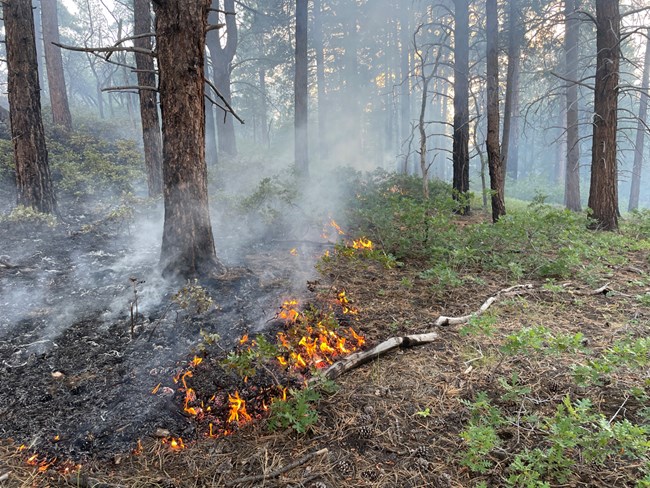Last updated: January 10, 2024
Article
Rainbow Fire proves excellent example of monitoring tactics reaching management objectives for Grand Canyon’s north rim

Brannfors/NPS
The Rainbow Fire started on July 24, 2023, from a lightning strike on the Rainbow Plateau, on the North Rim of Grand Canyon National Park. The North Rim has a long history of prescribed fires and wildfires helping to create a healthy ecosystem. The Rainbow Fire was located within two prior fire perimeters: the 2019 Saffron Fire and the 2001 Swamp Fire. “The Rainbow Fire is a great example of a fire occurring in an area that is both adapted to and regularly exposed to fire,” said Grand Canyon National Park Fire Management Officer, Ed Waldron.
Park and fire managers established management action points which are points that when reached would trigger a different action or tactic for response. These action points were focused on protecting resources and providing for firefighter safety. Because the fire continued to move slowly burning through ground vegetation, it was managed as a low complexity incident with only one to five staff periodically patrolling, mapping, and monitoring the fire with little need to intervene with additional management actions. These tactics provide safety for firefighters in lieu of active fire suppression tactics which would put firefighters lives at risk and serve no benefit to natural resources.

Brannfors/NPS
